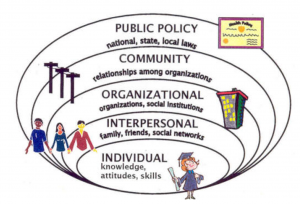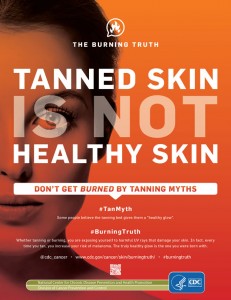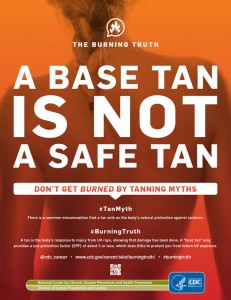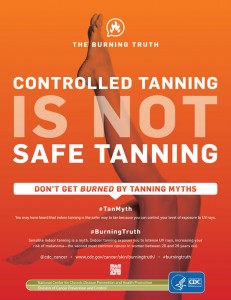Multicomponent Intervention
Community-wide multicomponent sun-protection programs use multiple combinations of strategies to influence the behaviors of people in a defined geographic location. The programs may range from a combination of setting-specific program with a mass media campaign to a complex, multilevel intervention involving entire, communities, workplaces, healthcare, schools, and recreation settings.
Community-wide multicomponent interventions use the following components in different combinations that are integrated into a defined geographic area (city, county, state, country):
- Individual-directed strategies
- Media campaigns
- Environmental and policy changes
Community-wide multicomponent sun-protection interventions uses the Change Theory of Behavior as a framework for the intervention. It is aimed at changing social norms in order to change high-risk for skin cancer behaviors by incorporating social influences at multiple levels. The interventions that target multiple levels (peer group, family, community influences) can assist in the behavior change and have a large effect on the population.
Community-wide multicomponent interventions are usually delivered with a defined theme, name or logo, and a specific message. They are designed to influence a large portion of the population in the specified area and are conducted over a one year period. Two U.S. programs, the SafeSun Project in New Hampshire and the Falmouth Safe Skin Project in Massachusetts were effective community-wide multicomponent interventions.
SafeSun Project
This program targets adolescents (ages 11-18) about the importance of skin protection behaviors since peer influence and media messages often conflict with those from parents and public health professionals. Sun protection steadily decreases as tan-seeking behaviors and pro-tanning attitudes increase during these ages.
The SunSafe program was designed to promote sun-protective behaviors in multiple ways and used trained teachers, school staff, athletic coaches, sports and recreation staff, primary care physicians and their staff, and teens to model and set an example of safe sun behaviors. The program used the following strategies to promote sun protective behaviors:
- active role modeling of sun-protective behaviors
- peer-led activities in the schools
- branded program materials displayed in the community (libraries, stores, beaches, pools)
- patient education materials and sun protection messages provided by primary care practices
- SunSafe health education programs for teens that include a DermaScanTM (a device to light that highlight skin damage from overexposure to UV rays not visible under normal light)
- Outdoor events, poster contests, fundraisers for the American Cancer Society, and school and community health fairs
Full study and findings found at: http://rtips.cancer.gov/rtips/programDetails.do?programId=298179
The Burning Truth Initiative


